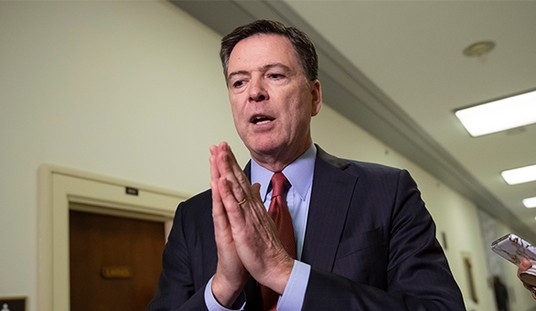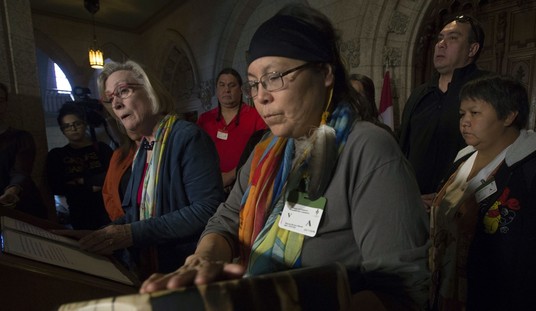“Vo Nguyen Giap Dead: Ruthless [North] Vietnam General Dies At 102,” the Huffington Post reported on Friday with a surprisingly tough-sounding headline linking to a fawning AP obit:
Vo Nguyen Giap, the brilliant and ruthless self-taught general who drove the French out of Vietnam to free it from colonial rule and later forced the Americans to abandon their grueling effort to save the country from communism, has died. At age 102, he was the last of Vietnam’s old-guard revolutionaries.
Giap died Friday evening in a military hospital in the capital of Hanoi where he had spent close to four years growing weaker and suffering from long illnesses, a government official and a person close to Giap said. Both spoke on condition of anonymity because his death had not been formally announced.
The was no word of the death in state-controlled media late Friday, but the news had spread widely in Facebook and other social media.
Giap was a national hero whose legacy was second only to that of his mentor, founding President Ho Chi Minh, who led the country to independence.
The so-called “red Napoleon” stood out as the leader of a ragtag army of guerrillas who wore sandals made of car tires and lugged their artillery piece by piece over mountains to encircle and crush the French army at Dien Bien Phu in 1954. The unlikely victory, which is still studied at military schools, led not only to Vietnam’s independence but hastened the collapse of colonialism across Indochina and beyond.
Giap went on to defeat the U.S.-backed South Vietnam government in April 1975, reuniting a country that had been split into communist and noncommunist states. He regularly accepted heavy combat losses to achieve his goals.
As the New York Sun, the source of our headline above notes, the mythology of Giap’s victory is “is no doubt going to be embroidered in one newspaper after another in the coming days:”
The death of Vo Nguyen Giap, coming as America supposedly is executing a “pivot” toward Asia, is a moment to sort the truth and the myth about Vietnam. The myth — that Giap was, as the Washington Post put it, the “military commander and national folk hero who organized the army that defeated the French and then the Americans” — is no doubt going to be embroidered in one newspaper after another in the coming days, as the general goes to a very small place in Hell, to make a play on the title of Bernard Fall’s classic account of the battle of Dien Bien Phu, “Hell in a Very Small Place.”
Dien Bien Phu, where the French met defeat, was the biggest victory in Giap’s cap, and we won’t gainsay it, as courageous as the French were there. We do gainsay the notion that Giap defeated the Americans. It’s not just that his role in the second Indochina war, between 1960 and 1975, was not as great as the earlier fight. It’s also that the U.S. Army was not defeated in Vietnam. It prevailed in combat against the Soviet- and Red-Chinese-backed North Vietnamese Army. And the Viet Cong. It defeated the enemy in Tet, during which the communists massacred as many as 6,000* unarmed civilians and prisoners at Hue. Giap may be a folk hero to some, but he served a nihilistic communist regime.
* * * * * *
The AP wire obit for Giap notes, “He regularly accepted heavy combat losses to achieve his goals,” as Orwellian a sentence as was ever written. This passage in the New York Sun’s article serves as a rebuttal of sorts:
We’ve always liked a trick question about the end of the war. When the 94th United States Congress finally pulled the plug on free Vietnam, how many American combat troops were still there? We once guessed something on the order of 100,000. It turns out that when the Congress pulled the plug on Vietnam, the number of our U.S. combat troops in Vietnam was zero. When, in the 1974 elections, the Democrats widened their majority in the Congress and then, in the spring of 1975, finally defied President Ford and ended support for the free Vietnamese, the number of uniformed Americans of any kind was but dozens, mostly embassy guards.
As David Gelernter wrote in America-Lite: How Imperial Academia Dismantled Our Culture (and Ushered In the Obamacrats), American involvement in Vietnam, both in terms of those who executed the war, and those who fought against it on the homefront, was largely a blue-on-blue phenomenon for virtually the entire 1960s. When I interviewed Gelernter last year, he told me:
MR. DRISCOLL: David, you mentioned intellectuals and Vietnam a moment ago. Another topic explored in America-Lite is the symbiotic relationship between the liberal intellectuals who dreamed up America’s role in the Vietnam War, and the liberal intellectuals who opposed it. And as you write, opposition to Vietnam essentially predates the war itself, not the other way around. How is that possible?
DR. GELERNTER: It’s an interesting thing. Many people, when they look at modern American cultural history, they say, sure, it’s a more left-wing world, a world that cares less about duty and devotion and patriotism, more about a sort of blanket neutral tolerance for everybody and everything. Things have changed. And a lot of people said, well, it’s Vietnam. You know, the war in Vietnam turned the country upside down and made us alter directions. But that is not so.
The war — opposition to the war was a result of a cultural revolution that had already begun to happen. I mean, we know, the so-called “new left”, everybody who has looked at the era of Vietnam is familiar with this phenomenon, the new left, who we associate with the hippies and the yippies and Abbie Hoffman and Jerry Rubin and many of the — Tom Hayden and Jane Fonda and that sort of person, the new left that led the mass demonstrations against the war in Vietnam as opposed to the old left; the old left being Communists.
These — the Jane Fondas and Tom Haydens were more or less Marxists, but no longer wanted to call themselves Communists.
But the interesting thing is, that this opposition had begun to organize well before anybody in the United States had heard of Vietnam. The so-called Port Huron Statement is a famous event in the creation of the new left in which Tom Hayden and his friends sit down and say we can’t stand this country. We, college students, know a better way to do it. This country is corrupt and its values are no good and so forth. That happened in 1962.
Yeah, there were American advisors in Vietnam in 1962 and in Laos and in all sorts of other countries. But there was no war in Vietnam in the sense that we know of it today. That war heated up in 1965. So — and if we look, even back to the 1950s, we find leading intellectuals, such as Normal Mailer, writing in a vein of destructive, violent bitterness against this nation. The destructive, violent bitterness, the idea of what we have to do is tear this nation apart because this nation doesn’t deserve to be proud of itself, those ideas came first.
Then the war in Vietnam showed up and was opposed by these people who had already decided that this nation was not worth standing up for.
In American Lite, Gelernter wrote:
As Norman Podhoretz points out, these so-called antiwar protesters “were not against the war at all but only against one of the two sides fighting it.” They wanted the Communist North to win.
As a video by Prager University painfully reminds us, they would get their way in 1975, with the help of the 94th Congress, which was swept into power by Watergate, and populated by numerous members of the radical and punitive New Left:
[jwplayer config=”pjmedia_eddriscoll” mediaid=”62137″ width=”590″ height=”360″]










Join the conversation as a VIP Member